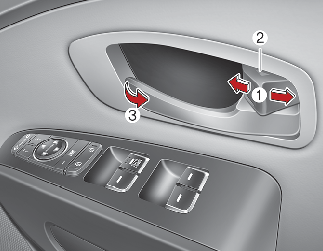Central Locking Systems Explained: A Comprehensive Guide
Central locking systems are a crucial component of modern vehicles, offering convenience and enhanced security. Understanding how these systems work and their benefits can help you make informed decisions about your vehicle’s security features. This article will explain the basics of central locking systems, their advantages, and what to consider when choosing or upgrading one for your car.
What is a Central Locking System?
Central locking systems allow you to lock and unlock all of your vehicle’s doors simultaneously with a single action. This system simplifies the process of securing your vehicle and provides added security features that enhance overall vehicle protection.
How Central Locking Systems Work
Systems operate through a series of electronic and mechanical components. When you press the lock or unlock button on your key fob or inside the vehicle, an electronic signal is sent to the central control unit. This unit then activates the locking mechanisms on all doors, ensuring they lock or unlock at the same time.
Components of a Central Locking System
System includes the following components:
Control Unit: The brain of the system that processes signals from the key fob or interior switch.
Actuators: Motors located in each door that physically lock or unlock the door.
Sensors: Detect whether the doors are properly closed and locked.
Key Fob or Remote Control: Allows the user to send commands to the central locking system from a distance.
Wiring Harness: Connects all the components, allowing them to communicate and function together.
The Benefits of Central Locking Systems
Enhanced Vehicle Security
One of the primary advantages of central locking systems is improved security. By ensuring all doors lock simultaneously, you reduce the risk of leaving a door unsecured, which could make your vehicle an easy target for theft. Many modern systems also include integrated alarms and immobilizers for additional protection.

Convenience and Ease of Use
Systems offer significant convenience. Instead of manually locking each door, you can secure your vehicle with a single action, whether using a key fob, remote, or interior switch. Features like keyless entry and remote start further enhance convenience, allowing you to control your vehicle’s locks without needing to insert a key.
Improved Access Control
Many central locking systems include features such as programmable access, which allows you to set different access levels for various users. For example, you can program the system to allow only certain key fobs to unlock the doors, providing an additional layer of security and control.
Types of Central Locking Systems
Manual
Manual central locking systems require the user to manually lock and unlock the doors from a central location inside the vehicle. This type of system is less common in modern vehicles but can still be found in some older models. It offers basic functionality and may not include advanced features like keyless entry.
Electronic
Electronic central locking systems are the most common in modern vehicles. They operate using electronic signals from a key fob or interior switch to control the locking mechanisms. These systems often include advanced features such as remote start, keyless entry, and integration with alarm systems.
Remote
Systems use a key fob or smartphone app to control the locking mechanisms from a distance. These systems offer added convenience, allowing you to lock or unlock your vehicle without needing to physically insert a key. Some systems also include features like remote start and GPS tracking.
Choosing
Compatibility with Your Vehicle
When selecting a system, it’s essential to ensure compatibility with your vehicle’s make and model. Not all systems are designed to work with every vehicle, so check with the manufacturer or a professional installer to confirm that the system you choose will fit your car.
Features and Functionality
Consider what features are most important to you. Modern central locking systems offer a range of functionalities, including keyless entry, remote start, and alarm integration. Determine which features align with your needs and preferences to ensure you get the most value from your upgrade.
Professional Installation
While some systems can be installed as a DIY project, professional installation is often recommended, especially for complex systems with advanced features. A professional installer will ensure that the system is integrated correctly with your vehicle’s existing electronics and functions as intended.
Maintaining
Regular Inspections
To keep your system in good working condition, perform regular inspections. Check that all doors lock and unlock properly, and ensure that the key fob and remote control batteries are functioning. Address any issues promptly to prevent potential security risks.
Battery Care
It relies on batteries for the key fob and remote control. Regularly replace the batteries to avoid unexpected failures. A weak battery can lead to decreased performance or complete loss of functionality, so it’s a good idea to keep spare batteries on hand.
Cleaning and Lubrication
Dirt and debris can affect the performance of your central locking system. Regularly clean the locking mechanisms and surrounding areas to ensure smooth operation. Applying appropriate lubrication to the locks can also help maintain system efficiency and prevent malfunctions.
Conclusion
The Importance
A reliable system is an essential component of modern vehicle security and convenience. By understanding the basics of central locking systems, their benefits, and how to choose and maintain them, you can make informed decisions to enhance your vehicle’s safety and functionality. Whether upgrading an existing system or installing a new one, investing is a step towards greater peace of mind and convenience.


